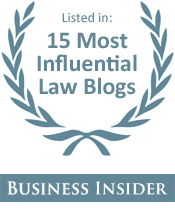Whistleblower Law Blog
Dept. of Labor’s Administrative Review Board (ARB) Clarifies Distinction Between Integrated Enterprise and Joint Employer Tests for Establishing Vicarious Liability under the Surface Transportation Assistance Act (STAA) Whistleblower Provision
The Department of Labor’s Administrative Review Board (ARB) recently issued an opinion in Myers v. AMS/Breckenridge/Equity Group Leasing 1, ARB No. 10-144, ALJ Nos. 2010-STA-7 and 8 (ARB Aug. 3, 2012). In Myers, the ARB reversed the ALJ’s decision finding the Respondent vicariously liable under a Surface Transportation Assistance Act (STAA) whistleblower complaint as a “joint employer”.
The case involved a payroll firm (AMS) for an Arizona-based trucking company, New Rising Fenix, Inc. (NRF). NRF hired Complainants Keona Myers and Russell Baxter and controlled much of their work assignments. NRF eventually terminated Myers and Baxter after they complained about a malfunctioning vehicle they used in their work and later contacted the Arizona Department of Public Safety about their concerns. Following this, the two workers filed an OSHA complaint under STAA and eventually amended their complaint to pursue AMS instead of NRF.
The ALJ found that Myers’ and Baxter’s termination was in violation of the STAA whistleblower provision and found AMS vicariously liable as a “joint employer.” However, on appeal, the ARB reversed the ALJ after considering whether the two companies had sufficient relatedness for vicarious liability under either the “integrated enterprise test” or the “joint employer test”.
The ARB noted that for cases involving an “integrated enterprise”, a corporation may be found to be liable without knowing participation because the action of one corporate entity is also necessarily the act of both entities. However, the ARB found that, here, the issue of vicarious liability turned on joint employer liability, not the issue of integrated enterprise as the Complainant did not suggest, nor did the ALJ find, that AMS and NRF were so integrated.
Under the joint employer test, the employing companies are assumed to be separate entities and are deemed as joint employers if the companies share or co-determine the essential terms and conditions of a worker’s employment.
In Myers, according to the ARB, AMS was not a joint employer as it has never exercised its “contractually reserved power” to control Myers’ and Baxter’s work. Accordingly, the ARB found that “AMS was simply a single corporate ‘person’ under the STAA” and, therefore, AMS did not violate the STAA when NRF decided to terminate the whistleblowers on account of their protected activity.
The Employment Law Group® law firm is a leader in the field of whistleblower protection law and has an extensive nationwide whistleblower practice representing employees – including commercial motor carrier whistleblowers – who have exposed illegal activity by their employer and suffered retaliation.
Tagged: Surface Transportation Assistance Act (STAA), Whistleblower Laws (Federal)



